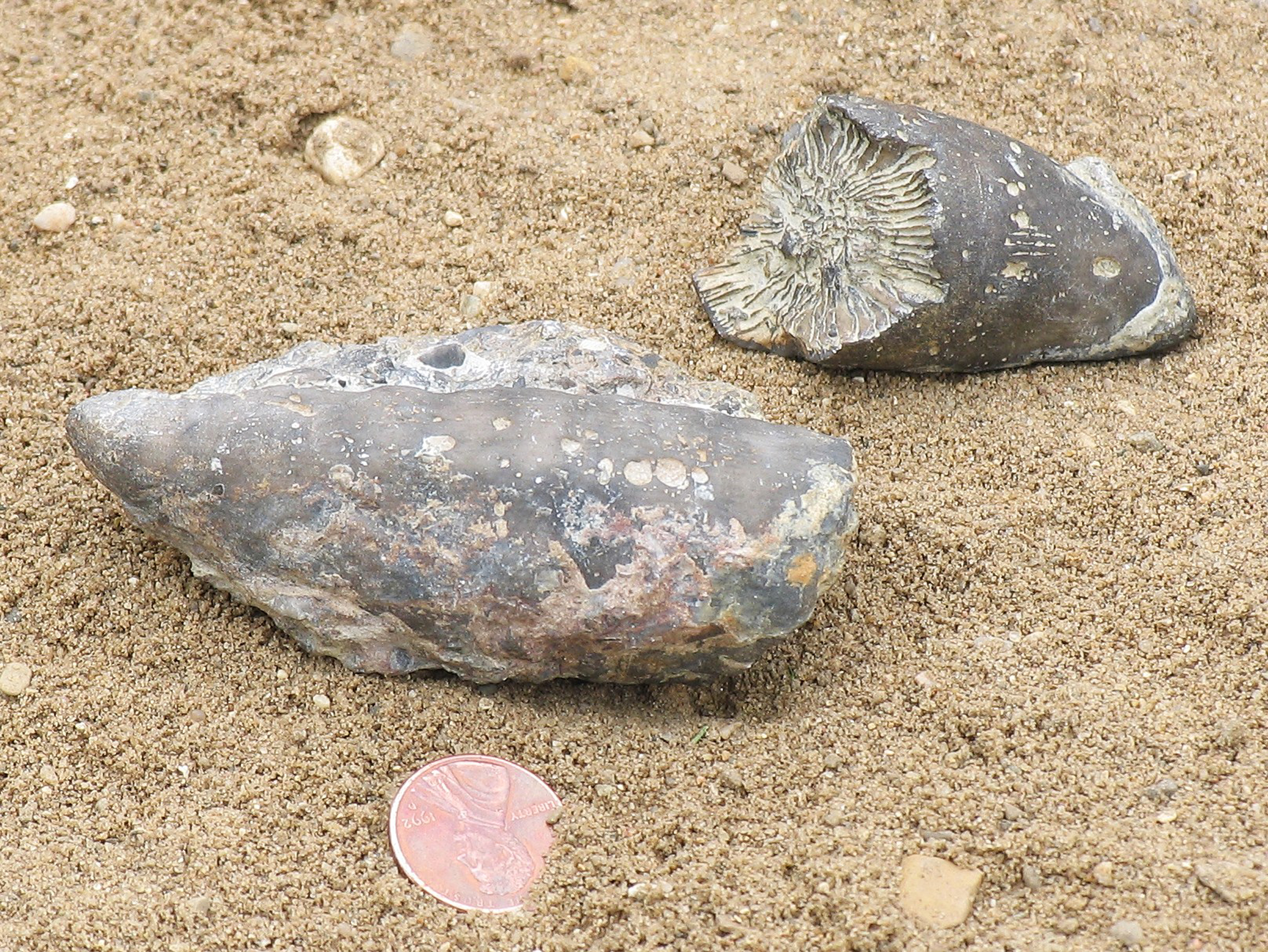
The horn corals have long gone by the wayside, but in their heyday, they must have added an extraordinary beauty to the diorama of the Paleozoic seafloor. Some varieties dominated the underwater, prehistoric scene reaching multiple-meters in height. At night, the coral animal flung out its long tentacles in order to sweep up unsuspecting tiny organisms passing by in the ocean currents.

Horn corals (rugose corals) attached themselves to the seafloor with the narrowed ends of their exoskeletons. As the organism grew, the top-end widened where the tentacles were encased; hence the reference to the shape of a horn.
Horn corals were extremely abundant during the Paleozoic time slot and most were individual varieties with a few colony variety exceptions.
Two Horn Coral Species Classification
Scientific Name: #1 Grewingkia, canadensis #2 Heliophyllum
Common Name: Horn Coral Same
Kingdom: Animalia Same
Phylum: Cnardia (means to sting) Same
Class: Anthozoa (means flower animal) Same
Order: Rugosa (means wrinkled wall) Same
Suborder: Stauriida Same
Family: Streptelasmatidae Zaphrentidea
Genus: Grewingkia Heliophyllum
Species: canadensis Unknown
Horn Coral Internal Structure
As a general rule, rugose coral have stronger radial septa (septum) or vertical growth walls that radiate outward from the center (like bicycle spokes). Rugose corals differ from other corals due to this pattern by which they add septa throughout their growth spurts. Named for their wrinkly outer skin, they possessed less developed horizontal partitions, but stronger vertical ones.
All rights reserved © Fossillady 2022

